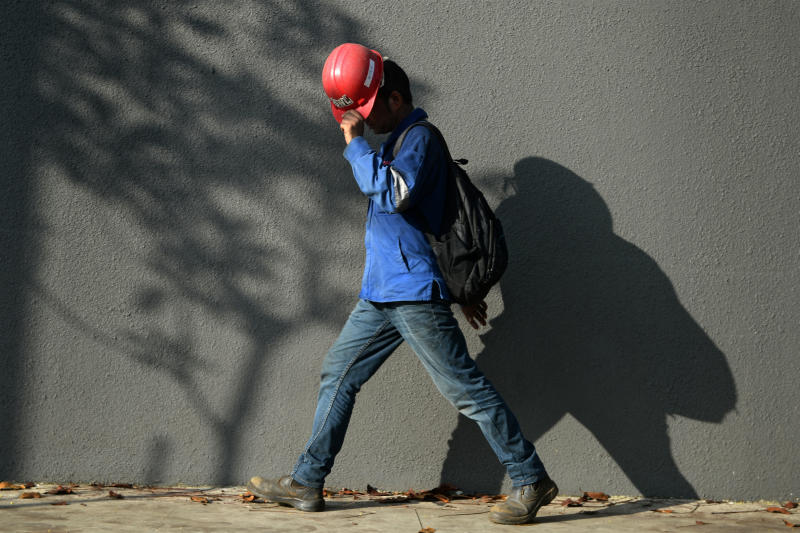Cooling Singapore project comes up with 86 ways to help island beat the heat
Sign up now: Get ST's newsletters delivered to your inbox

With global warming expected to nudge temperatures up by between 1.4 deg C and 4.6 deg C by the end of the century, making the outdoor environment cooler should become a national priority.
PHOTO: ST FILE
Follow topic:
SINGAPORE - People in Singapore have been feeling the heat long before climate change dominated discussions on rising temperatures around the world.
The reason? The urban heat island effect - a phenomenon where buildings, roads and vehicles release heat into the environment, especially at night. Studies have shown that this has resulted in temperature differences of up to 7 deg C between urban and less built-up areas of Singapore.
And with global warming expected to nudge temperatures up by between 1.4 deg C and 4.6 deg C by the end of the century, making the outdoor environment cooler should become a national priority, a team of scientists and policymakers said on Wednesday (July 11).
Urban Redevelopment Authority (URA) chairman Peter Ho said: "The urban heat island effect will compound the warming force of climate change... All cities, not just Singapore, will face the twin effects of global warming and the urban heat island effect."
He was speaking at the Cooling Singapore symposium, held during the World Cities Summit conference at the Marina Bay Sands.
During the event, researchers from a Cooling Singapore project - a research initiative first launched in 2017 - also referred to a "menu" of 86 possible measures spanning seven key areas that they have come up with to help make Singapore's outdoor environment cooler. The overarching themes are greenery, urban geometry, water features, material and surfaces, shading, transport and energy.
Far from the caricature of installing a giant air-conditioned dome over Singapore, these measures aim to make the Republic cooler through other ways, such as through design and the use of innovative materials. For example, varying building heights could improve wind flow, while using light-coloured or reflective surfaces on pavements and building facades could lower absorption of heat energy from the sun.
Such measures are already in place in some areas of Singapore. For example, the Marina Bay Financial Centre has structures of varying heights to capture wind, said Assistant Professor Winston Chow from the National University of Singapore's geography department, who is a principal investigator of the Cooling Singapore project. But he cautioned that the 86 measures were not one-size-fits-all, and had to be contextualised to specific sites and conditions.
On the importance of contextualisation, Cooling Singapore lead principal investigator, Professor Gerhard Schmitt, said each site had features that could influence ambient temperature. In the Central Business District, for example, a street there could be surrounded by glass-covered building facades, resulting in lower ambient temperatures, compared with a street in Punggol surrounded by concrete structures.
"This is why the Cooling Singapore project also involves modelling and field measurements at specific sites," said Prof Schmitt, who is from research institute Singapore-ETH Centre. The centre was established by the Swiss Federal Institute of Technology in Zurich in partnership with the National Research Foundation (NRF) under its Create programme.
Moreover, such studies are needed to find out whether these measures, if taken together, can magnify the cooling effect or cancel each other out. Trees planted along a wind corridor, for example, could reduce wind speed. Removing buildings in an area would not always improve outdoor thermal comfort, as buildings can sometimes provide shade, noted the researchers.
The Cooling Singapore project, led by the Singapore-ETH Centre and comprising academics from the National University of Singapore, Singapore-MIT Alliance for Research and Technology and Tumcreate (established by the Technical University of Munich), was first launched in 2017 to study ways to make the Republic's outdoor spaces cooler.
Besides the researchers, there is also a Cooling Singapore Taskforce comprising 14 other government agencies and research institute, including the URA and the Singapore University of Technology and Design.
Dr Lim Khiang Wee, executive director of NRF's Create programe, said: "Tackling the urban heat island effect requires strong commitment and coordinated efforts towards a long-term plan by multiple stakeholders, including policymakers, industry and academia. Any effort to single-handedly tackle it would at best be scratching the surface of this multi-faceted problem."
Scientists say the next step for the Cooling Singapore project would be the creation of a road map for the measures that each government agency can take to reduce outdoor temperatures.
Added Prof Chow: "The urban heat island effect has been undervalued previously, and this project aims to bring it to the forefront. There are many benefits to managing it properly, whether it be in the form of cost savings from using less energy; or indirect benefits of having more greenery in the city."

